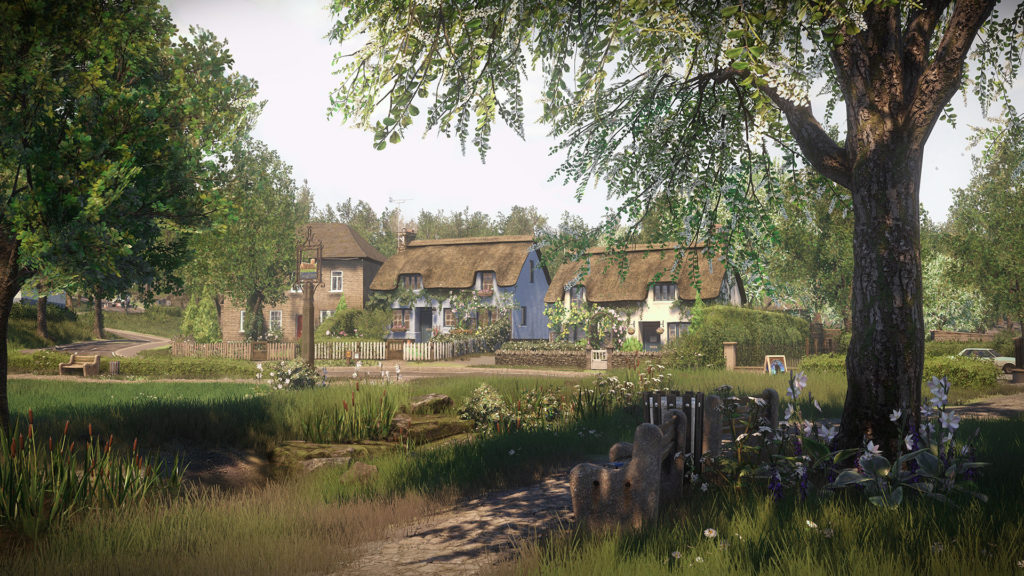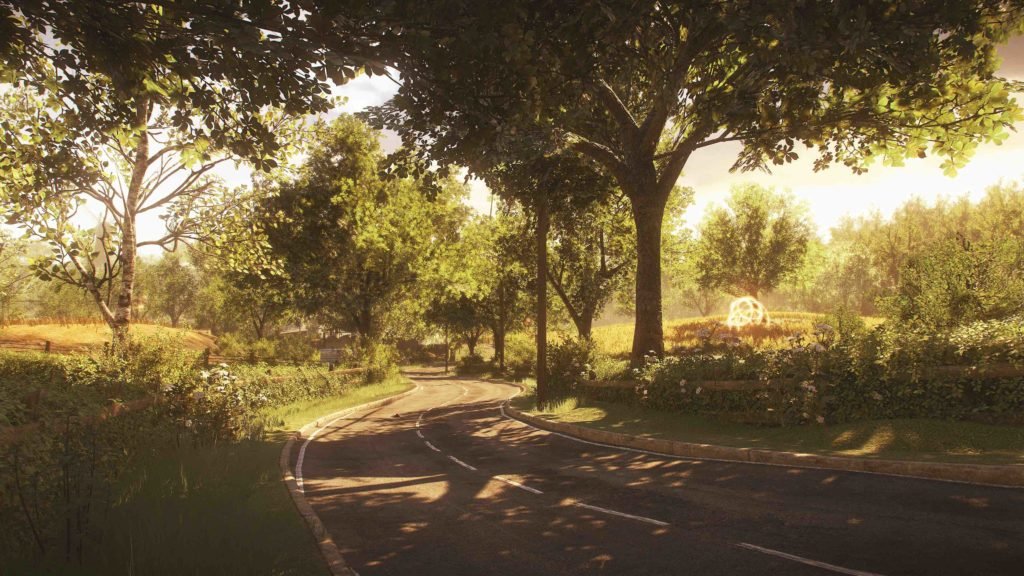Everybody’s Gone to the Rapture review
At times astoundingly beautiful, with amazing writing, and one of the best soundtracks ever made for a video game, Everybody’s Gone to the Rapture tells the intriguing, heartbreaking story of the apocalypse starting in a small English community in Shopshire in the 1980’s. As the player, you are set loose in the now empty village not long after the end of the world. And from there, you are allowed to explore and find echoes of people’s last days leading up to the apocalypse, left behind in a mysterious light.To be fair, Rapture is less a game you play, and much more an interactive story you discover. Mechanically, the game is very simple, the vignettes that make up a large portion of the game’s story emerging from balls of light as you explore the world, a few requiring a slightly awkward tilting of the controller to initiate. You can move and look around, and then X is ‘interact,’ allowing you to open a few gates or doors and turn off and on radios and TVs.

At times astoundingly beautiful, with amazing writing, and one of the best soundtracks ever made for a video game, Everybody’s Gone to the Rapture tells the intriguing, heartbreaking story of the apocalypse starting in a small English community in Shopshire in the 1980’s. As the player, you are set loose in the now empty village not long after the end of the world. And from there, you are allowed to explore and find echoes of people’s last days leading up to the apocalypse, left behind in a mysterious light.
To be fair, Rapture is less a game you play, and much more an interactive story you discover. Mechanically, the game is very simple, the vignettes that make up a large portion of the game’s story emerging from balls of light as you explore the world, a few requiring a slightly awkward tilting of the controller to initiate. You can move and look around, and then X is ‘interact,’ allowing you to open a few gates or doors and turn off and on radios and TVs.
Going in, I at first treated Rapture as an exploration game with elements of story. I tried every door in every house, exploring every nook and cranny, leading, sadly, to an incredibly frustrating experience. Each locked door, fence I couldn’t get around, and dead end that ended without a reward for having explored it, added to a growing list of things keeping me from enjoying the game. Soon however, the realization sunk in that Rapture is, in fact, a very different beast.

Nothing is tucked away or hidden, there isn’t story stashed away somewhere in the second room upstairs, it’s all out in the open, there to be found and enjoyed. Likewise, instead of being a complex maze to keep you from what you want to find, the world was just there to be experienced, exploration being more street-to-street, house-to-house, than it was room-to-room.
In Rapture, it is the beauty of the story and the characters that are on display. A strange ball of light guides you through the world, leading you to each of the major plot points throughout the six chapters of the game. But with auditory cues, like a ringing phone or the hiss of static from a radio, signaling their presence, there are multiple recordings and pieces of story littered around the world, waiting for any that are willing to leave the guided path. There are no puzzles to solve or obstacles to overcome in Rapture, just stories to discover, each chapter focusing on the narrative connected to a specific character, your understanding of the apocalyptic events and the individual people of the town changing as you uncover more perspectives.
While the radio and telephone messages deal with only what actually happened to bring the world to an end, it quickly becomes clear that the main focus of the game, the real story that matters, is all about the people of the town. How their lives fit together, how they connected, who they were, made all the better by impeccable, emotional writing and strong voice work. Though it is difficult to keep the growing cast of characters straight, especially considering you only ever get to hear their voices, and never see their faces, switching on subtitles, which have nametags, remedies the majority of the issues.
More than anything, The Chinese Room should also be applauded for constructing a non-linear storyline, where each piece can still fit into the whole, even if you miss some of the scenes or recordings. The fact that almost none of the story pieces are mandatory to find, there actually being a trophy for reaching the end of the game without viewing a single story sequence, makes those that you do find all that much more rewarding. In the place of combat or conflict, the main drive through the game is that very sense of discovery.
Where this system falls apart however is in one, near game-breaking bug. The guiding light that shows the way through the surprisingly large open-world gets stuck. Multiple times throughout the game the light would simply stop, not moving from a location. Not fully understanding the light, or its role as my guide, I would continue on, getting very lost on my own, a fact made worse by the strangely slow movement speed which I will touch on in a moment. It was not until I finally saw the guiding light actually get stuck in a bush that I realized something was wrong and I was not simply getting lost due to poor design. This unfortunately led to rebooting the game twice throughout the course of my four-hour playthrough just so I would know what direction to go in next. When the system works, it is beautiful and the game flows smoothly. Without at least the hint of the right direction however, I found myself wandering in circles, growing ever more frustrated.
Wandering aimlessly or not however, there is nothing excusing the movement speed in Rapture. While The Chinese Room has come out and revealed a sprint button not labeled anywhere in the game (holding R2 for seven seconds to build up to ‘sprinting’ speed), the sprinting movement still is little more than a brisk walk. And even if it was faster, the seven seconds separating me from the moment I decide to run and the moment I actually start running feels like some of the worst lag I could possibly imagine.
While the world is beautiful and worth strolling through, there is never a reason to be moving particularly slowly. I found myself stopping to watch or listen to any story pieces or admire any especially gorgeous scenes, and then holding R2 continuously, for the entire game, while moving. The simple fact is, while there is plenty to find in the game, the world is just too big, and the story pieces not nearly dense enough, to warrant such a slow movement speed. It actually discouraged me from backtracking and exploring more due to the substantial time investment it would take to get anywhere, with little new to see or do along the way.
Both of these are small gripes however, compared to what is in fact an extraordinarily gorgeous game. And I mean that in every way possible. Some of the visuals in Rapture are artistically awe-inspiring, elevated to hauntingly beautiful by the absolutely incredible soundtrack. Composed by Jessica Curry, the Rapture soundtrack deserves mention in the same sentence as any number of the greatest musical pieces from games and film. The art and music combine with excellent writing to forge the story you see unfold amongst the characters in their final days, one of the most intimate and emotional I have come across in a game in a long time. And on top of it all, the final scenes of the game managed a level of catharsis few games even dream to attempt.
Though not perfect, Everybody’s Gone to the Rapture is delightfully unique, and artistically special. While the lack of conflict or action will likely turn many away, those that come to the game with an open mind will find a gorgeous, worthwhile experience.
